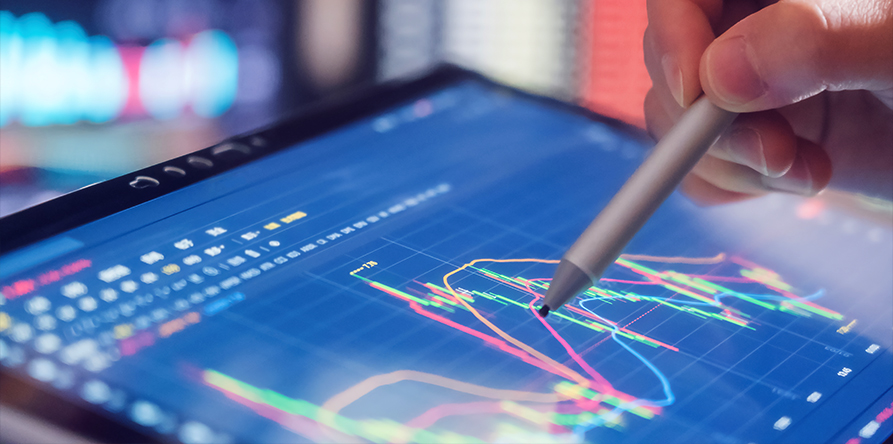
ETFs: A guide for Canadian investors
A guide to purchasing ETFs from Canadian fund companies
You’ve probably read online about something called “ETFs” and wondered to yourself, “What are they?”
Well, you aren’t alone.
An exchange-traded fund, or ETF, is an investment product that contains a portfolio of diversified assets, such as stocks and bonds or a mix of both.
ETFs are relatively new to the trading game. They were first seen in the Canadian market in the 1990s and only recently became a popular investment product.
Two of the many advantages of ETFs are generally lower transaction costs and typically no sales commissions. ETFs also won’t force you to stretch your pockets, because you can buy as little as one share to start.
Canadian ETFs are traded on an exchange like regular equities and are much more accessible than U.S. securities or foreign stock. You don’t have to look hard to find them.
There’s a lot to know about ETFs before you consider them for your own portfolio. Before investing, let’s take a closer look at how they work, their potential advantages and how they differ from mutual funds.
How do ETFs work?
Like mutual funds, ETFs are investment vehicles that grow based on communal efforts. They allow investors to pool resources and invest in multiple companies. Funds are exchanged for share units held by portfolio managers who oversee the fund. In other words, you and other investors are combining forces to invest in someone else’s portfolio.
One of the key differences between ETFs in comparison to mutual funds is that they are purchased and sold on stock exchanges during the trading day. This provides investors with the opportunity to buy and sell unit shares as the market fluctuates in real time. This makes an ETF – in a way – a kind of mutual fund that is actively traded. Many professionals consider ETFs to be a mutual fund/equity hybrid.
The ETF market is growing
According to the Canadian ETF Association, a total of 138 ETFs were issued in 2020. At year-end, the market reached a record $257.3 billion in net assets. This was a net increase of 25.6% year-over-year from 2019.
In addition, trading was not restricted to a single type of investor. Rather, a wide array of investor types – such as financial advisors, institutional investors and individuals – contributed to the ETF trading trend.
These substantial contributions to ETF trading volume by a variety of investor types over the past year signal that investors, in general, have become increasingly more comfortable trading these products.
The fact that this is happening at the tail-end of a pandemic-related economic shutdown suggests that ETFs are becoming a market mainstay regardless of the surrounding conditions.
In addition, previous predictions that ETFs might not have the market share or interest to withstand a turbulent market were squashed during the first quarter of 2021. A surge of ETF trading in May of this year resulted in $7 billion in new assets hitting the market.
What do ETFs do?
1. They provide liquidity.
Like stocks, ETFs trade continuously (and often) during trading hours. Intraday trading allows investors to purchase and sell these instruments as often as they please.
The more liquid a product, the better value you can receive when purchasing and selling shares. As activity for any product increases and a competitive market is created, investors are forced to trade those products at fair market value.
Liquidity is a crucial component of any product you consider incorporating into your portfolio.
2. They provide diversification.
ETFs represent all major sectors and industries and come in all sorts of sizes, ranging from large cap to microcap.
They can be used to fulfill long-term or short-term investment objectives, provide exposure to varying asset classes and help protect you from large market swings (all depending on how you invest, of course).
The number of possibilities may seem overwhelming. While you should consider all the options available to you, focus on those that are most appropriate for your investment objectives.
3. They allow the use of derivatives.
ETFs might be an attractive option for more knowledgeable and savvy investors who want to use options, swaps and futures contracts as risk management tools. As has been discussed, many ETF products are rather simple, but you can also find and purchase ETFs that allow you to hedge your exposure through options such as calls and puts.
However, these add-ons are not necessarily ideal for inexperienced investors. If you are not comfortable with these instruments, you should consider avoiding them until you have spoken with a professional advisor.
As always, be sure to review an ETF’s underlying assets before adding it to your portfolio. You always want to know exactly how they will affect your trading strategy and risk exposure. If you are unfamiliar and/or uncomfortable with embedded options, you will want to avoid these enhanced products.
4. They are simpler than you might think.
While they may appear intimidating, ETFs have a surprisingly straightforward structure and are easier to understand than you might think.
However, like any investment, the more you know about ETFs, the more successful you are likely to be.
Investors who possess a thorough understanding of at least the simpler ETF types typically realize more attractive returns on their investment. If you want to invest in an industry you have researched or buy an instrument that tracks one of that industry’s indexes, you might make good use of an ETF.
Three differences between an ETF and mutual fund
Mutual funds, like ETFs, are managed pools of funds supplied by a group of investors. While the two share many traits, they are still different in many ways. Some of those differences produce the additional advantages of ETFs.
Here are three important differences that you should understand before choosing either for your portfolio:
1. Trading frequency
As discussed previously, ETFs are funds that trade perpetually throughout the day. Like stocks, their live market prices are determined by supply and demand.
Your typical mutual fund, however, is not traded like an equity – even those funds that track a specific index. Rather, they are priced at the end of each trading day after their market has been established.
2. Minimum investment costs
ETFs can be purchased on a stock exchange, by the share, just like a standard equity. This typically makes them a cheaper initial investment.
3. Expense ratios/trading costs
ETFs typically have lower expense ratios than do mutual funds, due to lower management fees.
While you may have to pay a commission when you buy or sell an ETF, as you would with a stock, this is becoming less and less commonplace. While it has been a gradual process, many brokers and financial institutions are eliminating commissions not only on ETFs but on other exchange-traded instruments as well. Removing these fees will significantly improve the cost for any investment.
Many are actively managed
In recent years, an increasing number of ETFs are being managed more actively. Many ETF managers are now using investment strategies to reweight and reallocate portfolio shares. In these instances, managers are treating ETFs more like traditional mutual funds.
The primary benefit of active portfolio management is that portfolio managers can research and explore investment opportunities without being bound by an index.
They make daily decisions on which assets to purchase and sell based on guidelines outlined in the ETF’s prospectus. Some of these guidelines are broad and permit portfolio managers to buy almost anything within reason, while other guidelines are far stricter.
In either case, always be sure to review any fund’s prospectus prior to investing.
Next step: Explore your options
As you conduct your own research, you might find that the advantages of ETFs are more compelling than you previously realized.
They are becoming more and more popular as an investment alternative, due to their low administrative costs, dynamic features, versatility and liquidity. Add to that a growing trend of more actively managed ETFs and increased earning potentials, and you have a relatively inexpensive product with increasingly attractive potential.
That all being said, no trade or investment is a sure thing – far from it. Just like any other investment product more complex than your standard bank savings account, there are inherent risks. Some are obvious, while others are hard to see.
While these risks might imply that ETFs are not necessarily for everyone, all investors should at least consider making them a component of their broader investment strategy. Analyzing these products and weighing the pros and cons, however, can often require knowledge and experience.

